Chau Doc, a transit point to Cambodia, is located in the Northwestern part of the Mekong Delta, on the banks of the Hau Giang River (Bassac) about 250 km west of Ho Chi Minh City and about 120 km from Can Tho City. It is strongly recommended that all tourists who wish to visit the Mekong Delta in Vietnam and continue their journey to Phnom Penh without returning to Saigon spend at least one night in Chau Doc.
General information
Since the opening of the borders in 2000, Chau Doc is known as a real developer. Many visitors who travel from Vietnam to Cambodia will pass through this lovely city. Chau Doc also has the international border of Tinh Bien (on the mainland, easy to cross for international tourists), which provides access to Cambodia. This proximity to Cambodia has favored an eclectic mix of Cham, Khmer, Chinese and Vietnamese cultures and a wealth of history. The local minority groups add color and variety to this region, which is particularly evident in traditional tissues and clothing worn as well as local architecture.
Chau Doc is a perfect waypoint for a spiritual journey and ecotourism.
Climate and best time to visit
Like any province of the Mekong Delta, Chau Doc (An Giang, Vietnam) enjoys a tropical monsoon climate. There are two distinct seasons in a year: the rainy season and the sunny season.
In general, it is pleasant to visit Chau Doc all year, because the average temperatures vary very little, between 22 and 32°C. In May, June and July, the temperature is quite high but this does not bother tourists. From August to November, it rains a lot, which often leads to severe flooding. However, during this period, you can discover the life of local people by taking a journey on small boats along a river.
The best time to go to Chau Doc is therefore between November and April. The absence of rain makes the visit much easier. If you are interested in the Ba Chua Xu festival in Chau Doc, you should visit it in the fourth lunar month (23-27 days). And note that you need to be more careful with your affairs, especially during festivals, to avoid robbers.
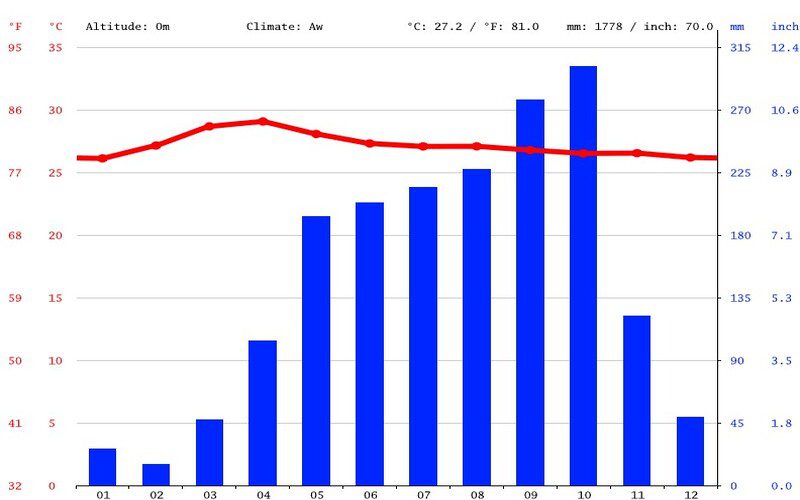
The climate of Chau Doc
Getting to Chau Doc
By bus
The public bus runs daily between Ho Chi Minh City, some provinces of the Mekong Delta and Chau Doc.
- From / to Ho Chi Minh City: 244 km (Duration: 5h)
- From / to Can Tho: 116 km (Duration: 3h)
- Long Xuyen: 62 km (Duration: 1h)
- From / to Rach Gia: 110 km (Duration: 3h)
- From / to My Tho: 181 km (Duration: 4h)
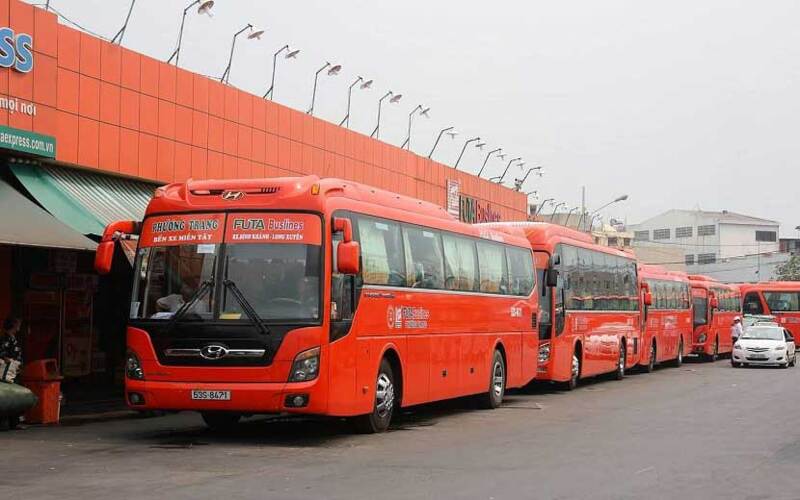
Bus from Saigon to Chau Doc
By private car
This is the most convenient way to get to Chau Doc. Along the way, you can stop at Mekong Delta provinces, such as My Tho, Ben Tre, Can Thơ, Tien Giang, etc. We offer you the service of car rental in Vietnam along with your program of traveling or please contact us if you wish to have more information. You will be assured because price and quality are fixed in advance.
By boat (slow or fast)
From Ha Tien: by wooden boat (from 6h30 to 18h30). Allow approximately 12 hours of travel. Several police checks along the way, because of the proximity of the Cambodian border.
From Phnom Penh (Cambodia): slow and fast boats departing to Chau Doc. Reservation 1 day in advance. Departing around 7h-8h, arrival in Chau Doc at 17h. The fast boat starts at 8h in the morning and arrives in Chau Doc at 13h30. There is also an ultra-fast boat: duration 3h30.
Getting around Chau Doc
By xe loi (cyclo-rickshaw)
The service of cyclo-rickshaw was once the most common and well-known mode of public transport in the Mekong Delta. Consisting of a normal bicycle that is attached to a large two-wheeled trailer where passengers sit, it is locally known as Xe Lôi or Xe Đạp Lôi. But, with the recent introduction of more modern and even cheaper retail transport, this traditional service is likely to be totally obliterated. Chau Doc is the only place where you can take a tour by Xe Loi, a unique experience for locals and tourists.
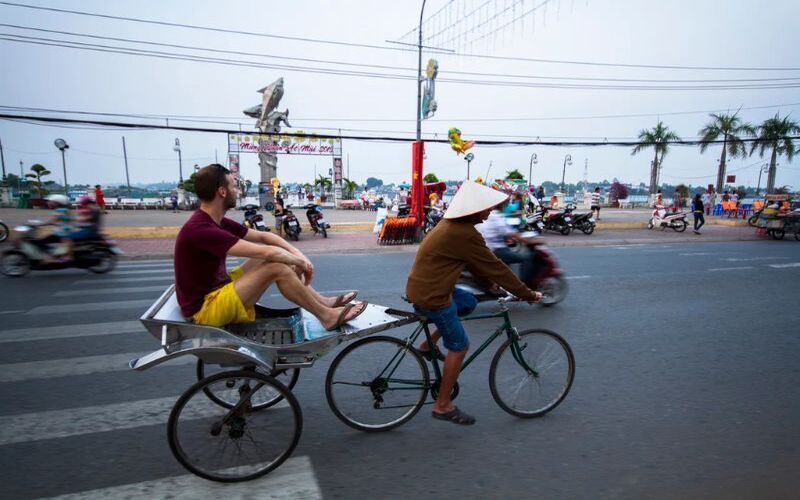
Xe loi
By bike/motorbike
Chau Doc owns the most beautiful scenes of the Mekong Delta, and it is also very original. Renting a bike or a motorbike and walking through the streets of the countryside is truly a memorable experience.
By taxi
To get around downtown Chau Doc, you can use another type of transport: the taxi. If you want to book a taxi, there are several biggest taxi agencies: Taxi Mai Linh, Taxi Saigon Hoang Long, Taxi Long Xuyen.
By private boat
Private boats (50,000VND for 2 hours), driven by scullers, can be rented by one or other piers and are highly recommended for viewing the floating houses and visiting villages and Cham mosques. Motorboats (100,000VND/hour) are also available.

Private boats in Chau Doc
Accommodation in Chau Doc
Chau Doc City offers you several choices of accommodations. But the hotels which you find are mostly 1 – 3* and only offer sufficient comfort: clean room with private bathroom and air conditioner but it lacks charm. Among the most chosen names are Hung Cuong 3* Hotel, Chau Pho, Victoria Nui Sam Chau Doc 3,5* – beautiful property whose rooms are scattered on the slope of Mount Sam, the Victoria Chau Doc Resort 4 *, the best hotel located by the Hau River.
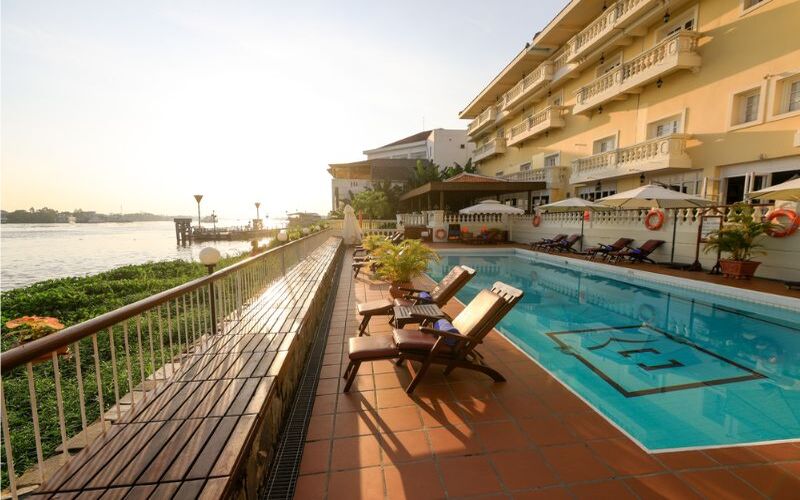
Victoria Chau Doc Resort
Best places to visit in Chau Doc
Tra Su Cajuput Forest
This forest of approximately 850 hectares is home to nearly 140 plant species, 70 species of birds, 25 species of reptiles and amphibians, 20 species of fishes, and 11 species of mammals. The biodiversity present in this nature reserve is extraordinary and preserved. The cajuput represents the most present species, the largest being able to measure approximately 10 meters in height.
The best way to visit this forest is surely by boat which follows the stream through the forest. This stream is also nicknamed “green path” thanks to the hyacinths that invade it. The calm of this place is imperturbable, and you will live in a truly magical moment that you will remember forever.
An observatory is also present on site and allows you to enjoy a panorama of the nature reserve and the green color that extended as far as the eye can see.
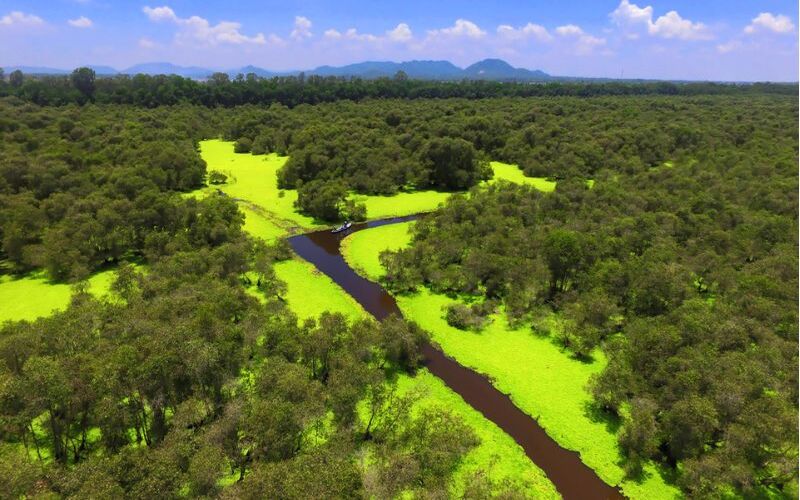
Tra Su Cajuput Forest
Sam Mountain
This 230-meter-high mountain offers magnificent landscapes and many historical remains. Sam Mountain is the highest mountain in the Mekong Delta and is considered the main attraction of Chau Doc. Climbing the summit is, of course, the highlight of a visit to Sam Mountain. It offers spectacular views of the surrounding area. A military outpost sits at the top, which is still functional.
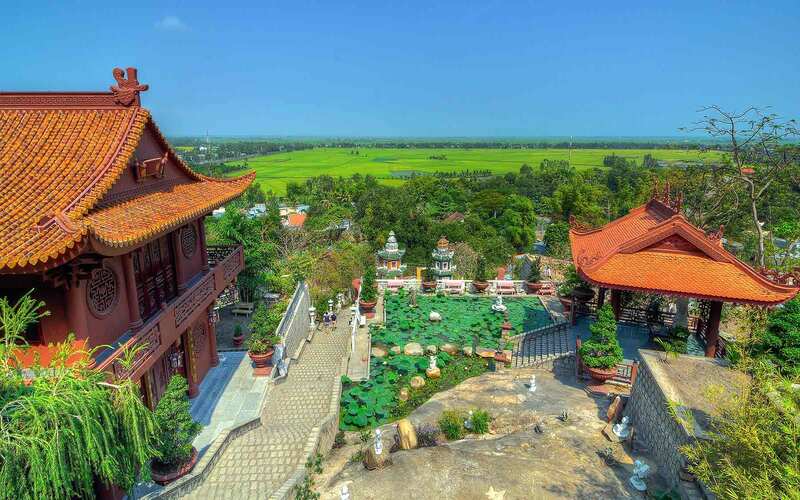
Sam Mountain
Tay An Pagoda
This pagoda is located at the foot of Sam Mountain. It is one of the most original places of worship thanks to its architecture combining Buddhist and Hindu influences (it is also the first construction in the country to combine these styles).
Built in 1847, this pagoda owns 200 statues, most of which are very nicely decorated. At the entrance of the pagoda, you will find statues of a black elephant with 2 tusks and a white elephant with 6 tusks (it is said that the mother of Buddha saw an elephant with 6 tusks in her dreams before giving birth). You can also see 7 snake statues (Buddha was saved by a snake during a storm).
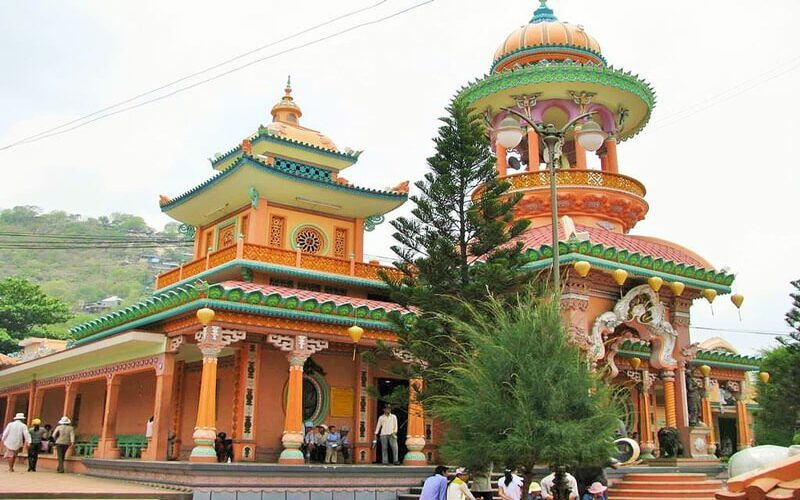
Tay An Pagoda
Thoai Ngoc Hau Tomb
Thoai Ngoc Hau Tomb, also known as the name of Son Lang, is a rare intact architectural work typical of the Nguyen Dynasty remaining in the South. This is a big and beautiful work, very valuable culturally, historically, and architecturally.
Look at the whole from afar, on the slopes of Sam Mountain, next to the Vinh Te canal, is the majestic tomb area, green with the remains of large trees. Son Lang is located at the foot of Sam Mountain, next to countless other monuments, but strangely, it is never noisy like the other temples here but always has a calm, dignified, and respectful atmosphere.
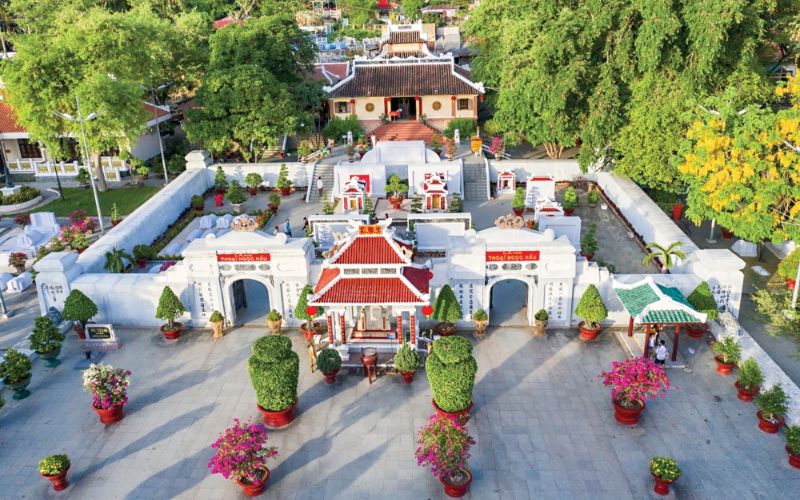
Thoai Ngoc Hau Tomb
Ba Chua Xu Temple (Country Queen Temple)
Located at the foot of Sam Mountain, Ba Chua Xu Temple resembles a blossoming lotus with its three-tiered roof and artistic decorations. Every year, from the 23rd to the 24th day of the 4th lunar month, locals organize the Via Ba festival to pray and remember the country’s heroes.
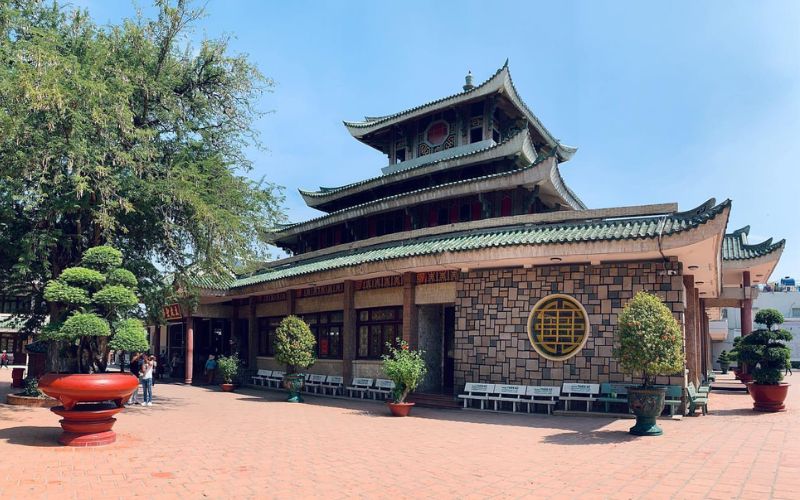
Ba Chua Xu temple
Hang Pagoda (Cave Pagoda)
Cave Pagoda is one of the most interesting sites in Chau Doc. To visit this pagoda, visitors must climb more than 400 steps up Sam Mountain. It was founded in 1926 to commemorate Nguyen Huu Canh of the Nguyen Dynasty who regained territorial sovereignty for Vietnam.
Chau Phu Pogoda
Chau Phu Temple represents the essence and typical architecture marking a bold imprint of the Nguyen Dynasty, and the traditional style of the communal village in southern Vietnam. Every year, the temple organizes a ceremony for the death of Nguyen Huu Canh on May 10 and 11 according to the lunar calendar and celebrates the anniversary of the death of Thoai Ngoc on the June 6 lunar calendar. Each festival attracts tourists who come to worship.
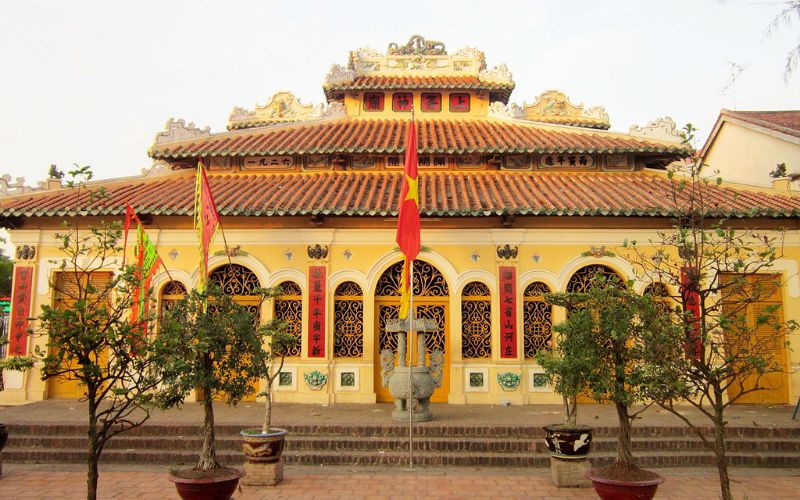
Chau Phu temple
Floating village of Chau Doc
Departing from Chau Phu temple, the most unique attraction is Chau Doc floating village, with a unique cultural style of waters. Here, each raft is like a dwelling connected to each other and stretches along both banks of the river. The life of the families is concentrated on a raft 4 meters long and from 7 to 8 meters wide. Canoes and boats are the main types of subsistence for each family in the village.
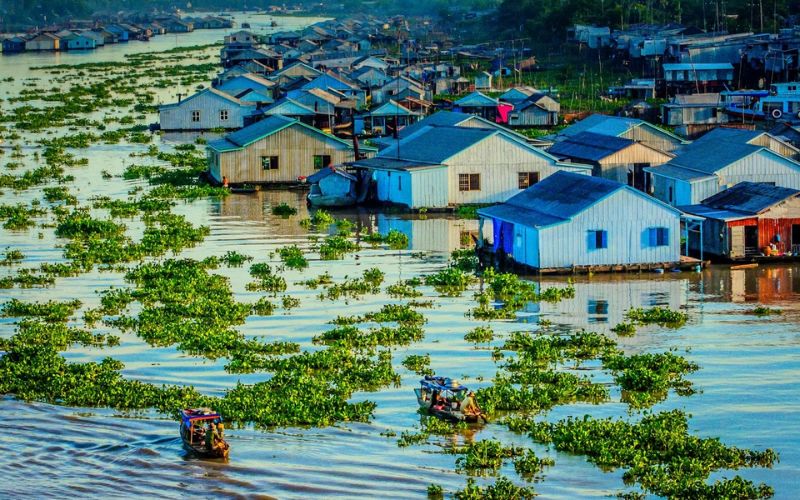
Chau Doc Floating village
Cham Village of Chau Giang
After visiting the floating village, disembark at the Cham village of Chau Giang for a discovery of this Muslim community. This village retains its customs and costumes well until this day, the women wear a loincloth and a scarf passing on their heads, the men wear a qamis – a long tunic and cover themselves with a black headdress for old people, white for young people.
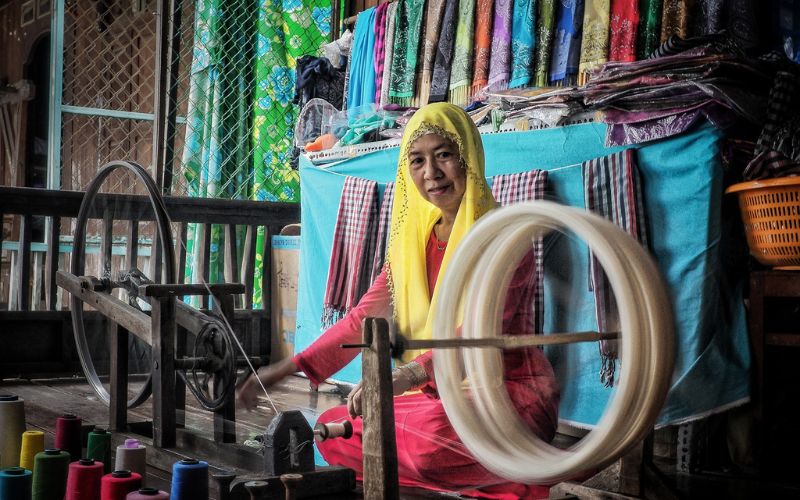
Cham village of Hau Giang
Must-eat Foods in Chau Doc
Bun ca Chau Doc (Rice noodles with fish)
Bun ca (rice noodles with fish) is the most attractive dish in Chau Doc that you shouldn’t ignore. This dish is extremely delicious and very refreshing thanks to the unique recipe of the chefs here.
The preparation is not difficult, but the ingredients are only found in the southwest, Bun ca has a typical Chau Doc flavor. The sweet taste of fresh snake oil, the smell of fragrant rice noodles and the unique flavor of sesbania flowers (a floating seasonal plant typical of southwestern Vietnam), all create a bowl of rice noodles with fish that really captivates diners.
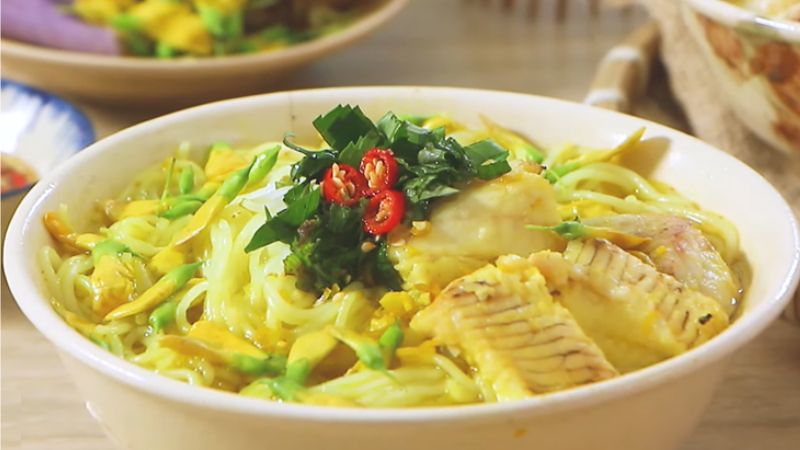
Bun ca Chau Doc
Goi sau dau (Neem salad)
The neem tree is a wild plant, which grows the most in the region of Chau Doc (An Giang). Its leaves are small, long and thin. Neem salad is known as the most special and popular neem specialty, from salads of shrimp, meat, fish to dry salads, all are perfect.
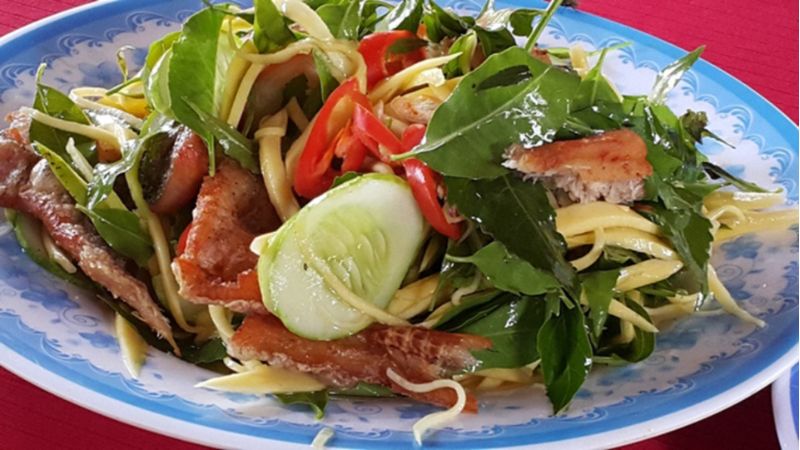
Goi Sau dau
Tung lo mo (Chau Doc sausage)
When visiting the Cham villages of Chau Doc, visitors will see in the yard of each house many long dark red coils resembling sausages drying on bamboo poles or wooden stalls. This is the famous Cham dish “tung lo mo”, a type of local traditional sausage. There are two types of “tung lo mo”, sour and non-sour. For the sour type, rice is added to create a light sour taste, a very strange smell and taste. The non-sour type is for visitors who are unfamiliar with this stranger’s taste.
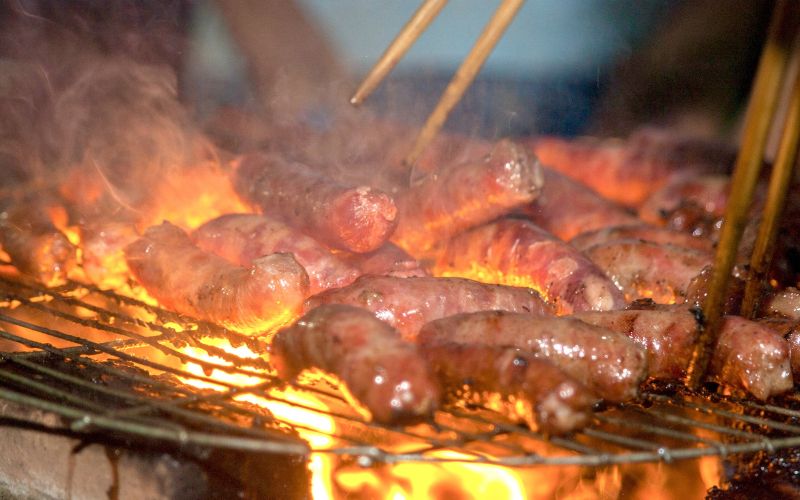
Tung lo mo
Com ni – ca pua
Cam ni is made of rice cooked with milk, raisins can be added according to individual taste. Ca pua is made from beef marinated with very specific southwestern spices like liqueur, ginger, coconut milk, curry, onion, etc, creating a unique characteristic of this rustic dish.
Com ni – ca pua is also a famous traditional dish of Cham Chau Giang village. These two dishes combine harmoniously, with a recipe that is relatively delicate, unique and quite strange for Vietnamese travelers as internationals.
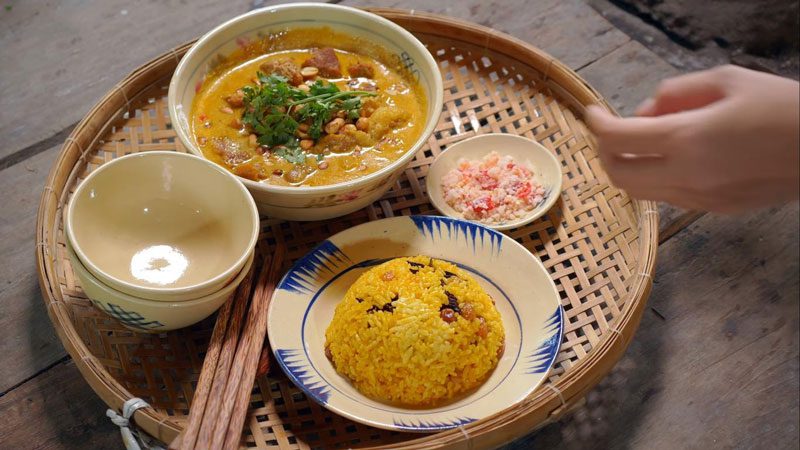
Com ni – ca pua
Banh bo thot not
Banh bo thot not is a type of favorite sponge cake in southwest Vietnam and is also a famous specialty of An Giang. The delicious, sweet taste of jaggery makes diners nod and praise.
If you come here once, you should try this dish, to better feel the delicious, sweet and greasy taste of Banh bo thot, not An Giang. Banh bo is a rustic dish, but it is considered a specialty of Chau Doc, made from the simple and familiar ingredients of locality, by the hands of the “bakers”, sincere and honest peasants of the Seven Mountains region.
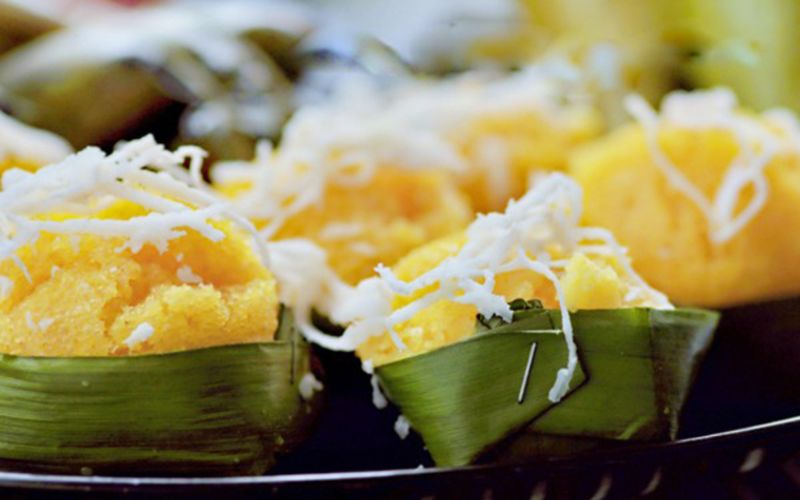
Banh bo thot not
Chau Doc is an excellent choice for a depth discovery of South Vietnam. We hope that the practical information acquired above will be useful for you. Do not hesitate to contact us if you have any questions.
